The mountain of Tai Shan is shrouded in mist, dominating the city of Tai An that is home to 800,000 people. It is the most significant of the five sacred Chinese mountains and its origins are shrouded in ancient creation myth.
The myth begins with the birth of Pan Gu, when all was chaos and heaven and earth were one swirling mass. He began a lifetime’s work of separating the ground from the sky and, as he grew taller, the sky grew higher and the earth became thicker until, after 18,000 years of toil, the two were fully separated and Pan Gu died of exhaustion. As his body disintegrated, his eyes became the sun and the moon, his blood transformed into rivers, his sweat fell as rain and his head and limbs became the five sacred Taoist mountains of China.
For three thousand years kings and emperors have come here to pay homage and make sacrifices to the earth (at the base) and heaven (at the summit). As time went by, the myth evolved so that it was thought that heaven would never allow an unworthy ruler to ascend the slopes, so a successful climb denoted divine approval.
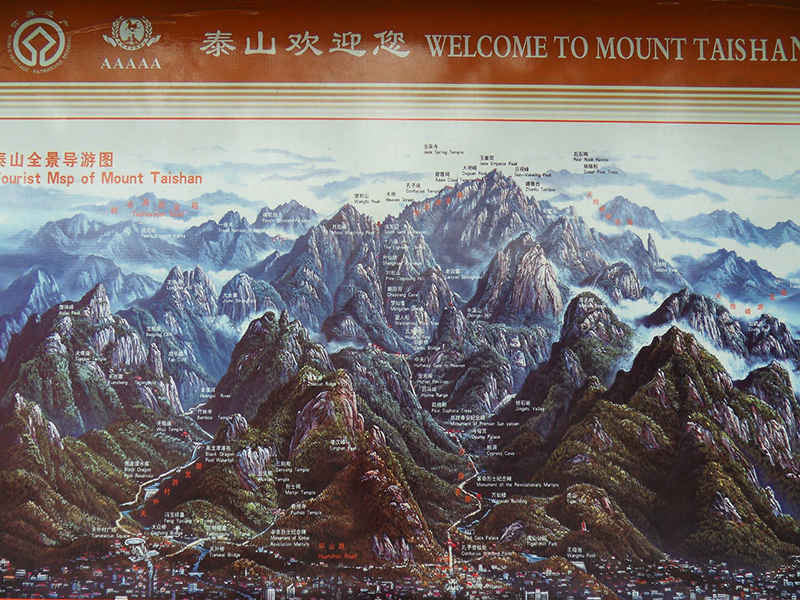 It is no surprise that Tai Shan is also home to several important deities. The most important being the goddess Bixia who is considered to be either the daughter of the mountain itself (which, interestingly, was promoted to the rank of emperor in 1101 AD) or a she-fox who lived a Taoist existence and transformed into a reincarnation of the Big Dipper constellation. Pilgrims climb to the temple of Bixia on the summit to ask for her blessing. But like many supernatural beings, she has a dark side as well. Many locals still have their children’s fortunes told at birth to determine whether they are one of the goddess’ offspring for, it is said, that those who are descended from Bixia cannot climb the mountain for she will never let them return to earth.
It is no surprise that Tai Shan is also home to several important deities. The most important being the goddess Bixia who is considered to be either the daughter of the mountain itself (which, interestingly, was promoted to the rank of emperor in 1101 AD) or a she-fox who lived a Taoist existence and transformed into a reincarnation of the Big Dipper constellation. Pilgrims climb to the temple of Bixia on the summit to ask for her blessing. But like many supernatural beings, she has a dark side as well. Many locals still have their children’s fortunes told at birth to determine whether they are one of the goddess’ offspring for, it is said, that those who are descended from Bixia cannot climb the mountain for she will never let them return to earth.
Another important deity is Shi Gandang, who is essentially a portable version of the mountain. In the same way that Tai Shan can protect the country from harm, a stone inscribed ‘Tai Shan Shi Gandang’, and then placed in an alley or used as a cornerstone in a building, will protect a community from evil spirits. So, those that are feeling a bit down on their luck and in need of a bit of help to battle their personal demons, they can purchase an incarnation of Shi Gandang from one of the numerous shops at the foot of the great mountain. The only drawback is that the stone has to be lugged all the way to the top and Shi Gandang can make for a hefty travel companion on a route that has some lung busting passages.
Thus, anyone who is anyone in China has climbed the mountain: From Qin Shi Huang, the first Emperor to unify the country in 219 BC, to Confucius to Du Fu to Mao Zedong (the communists covering all their bases). So how could we resist joining such august company of fellow scribes and philosophers? And achieve divine approval!
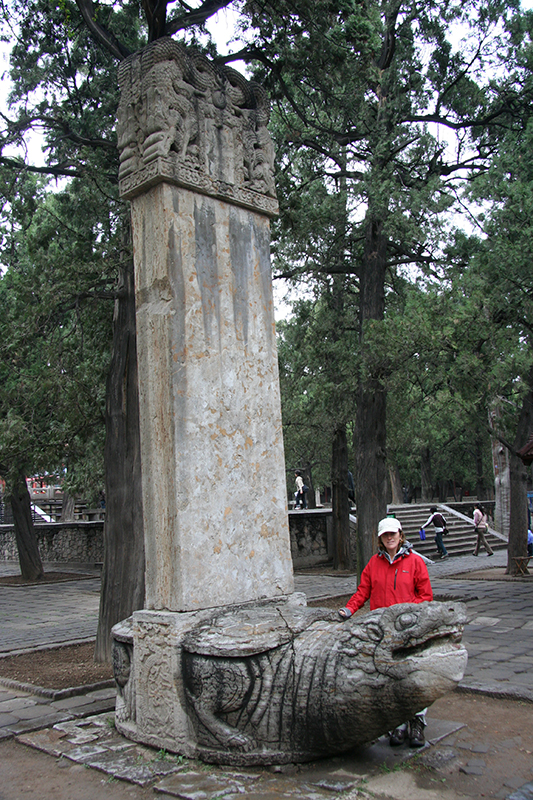 The pilgrimage begins at the Dai Temple in town where the first sacrifices and homage is paid to the mountain. It is an excellent example of temple architecture, with birds squawking amongst the ancient, hoary cypress trees and hundreds of old stellae (great slabs of stone, often mounted on tortoises, inscribed with tales, ceremonies or financial restoration accounts) stand silent guard around the gardens.
The pilgrimage begins at the Dai Temple in town where the first sacrifices and homage is paid to the mountain. It is an excellent example of temple architecture, with birds squawking amongst the ancient, hoary cypress trees and hundreds of old stellae (great slabs of stone, often mounted on tortoises, inscribed with tales, ceremonies or financial restoration accounts) stand silent guard around the gardens.
The main pavilion is the Hall of Heavenly Blessing that houses a statue of the god of Tai Shan. The walls of the dark interior are decorated with a flaky and unloved 62m Song Dynasty fresco depicting the Emperor Zhenzong travelling to and from the summit. The fortunate fellow made the first half of the journey on horseback and was carried the rest of the way. This seemed a good wheeze but, when I suggested to Debbie that she might like to carry me to the summit, I received a response that I am too polite to record.
So we set off laden with water, flasks of ginger tea and enough clothing to cater for any weather conditions, marching with the pilgrim’s fervour of determined purpose past the First gate of Heaven at the base of the mountain. The top is 8Km away and there is, reputedly, over 7,000 steps to be negotiated during the 1,400m ascent to the peak.
We are joined by a surprising number of wiry grandparents who are, no doubt, making the trip for the umpteenth time, and a steady throng of camera wielding Chinese. We are a source of constant amusement to one and all, perhaps because we are the only foreigners but, more probably, because of Debbie’s model good looks and elegance. ‘Hello, hello’, gets shouted at us constantly by good natured people. ‘Ni Hao’, we reply, displaying our wide ranging knowledge of the language. Generally, this is as far as either party manages to communicate before their faces crease with laughter or the giggles. From time to time we are grabbed for photographs, required to pose with any number of people as if we are of as much curiosity as the mountain itself. Those that are too shy to ask for pictures run around snapping us as we yomp along or take photographs of us taking photographs. It’s all a good natured diversion and gives us some respite from the climb.
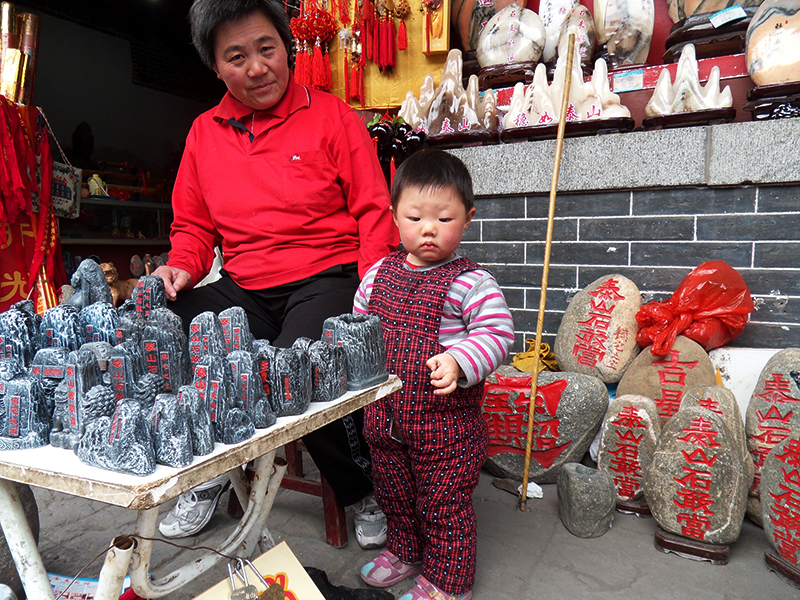 Along the route there are many rocks inscribed in red calligraphy, the meaning of which is totally lost on us, and number of temples, presumably for those that flake out before the summit. There are also hundreds of little shops selling drinks, food and souvenirs staffed by those that stand and stare at our passing.
Along the route there are many rocks inscribed in red calligraphy, the meaning of which is totally lost on us, and number of temples, presumably for those that flake out before the summit. There are also hundreds of little shops selling drinks, food and souvenirs staffed by those that stand and stare at our passing.
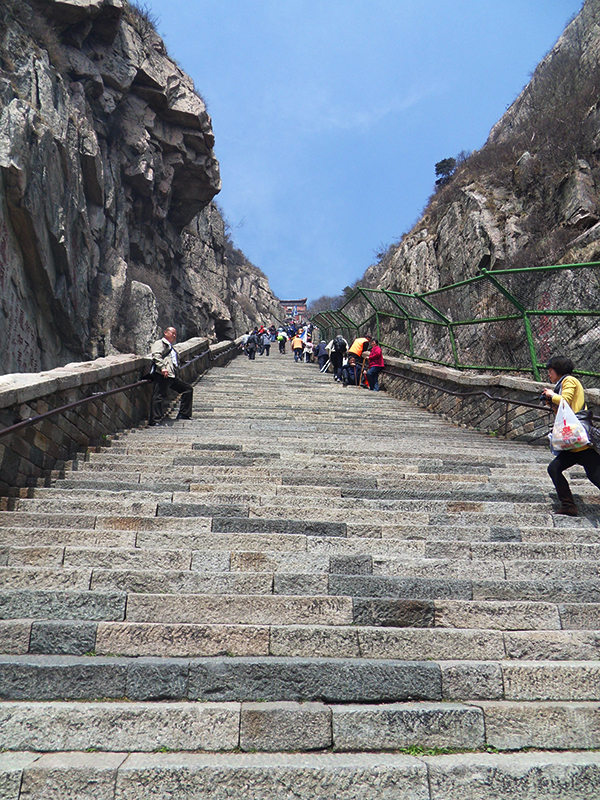 After an hour and a half, we reach the Midway Gate to Heaven. The going has been strenuous but not too bad and the tales we had heard about the difficulty of the climb seemed over-exaggerated. There were many more people here, milling around as we had been joined by the sick, lame and lazy who had taken the bus from town. However, the crowd thinned out very quickly as this lot took the cable car from here to the peak. Surely, going to the summit by bus and cable car is not cricket and I hope the god of Tai Shan ignores their pleas and withdraws his protection. No pain, no gain?
After an hour and a half, we reach the Midway Gate to Heaven. The going has been strenuous but not too bad and the tales we had heard about the difficulty of the climb seemed over-exaggerated. There were many more people here, milling around as we had been joined by the sick, lame and lazy who had taken the bus from town. However, the crowd thinned out very quickly as this lot took the cable car from here to the peak. Surely, going to the summit by bus and cable car is not cricket and I hope the god of Tai Shan ignores their pleas and withdraws his protection. No pain, no gain?
Very shortly, we start to climb steeply as we reach the Path of Eighteen Bends. I have no idea where the name comes from because the route is straight up and unrelenting. Climbing is performed in slow motion as legs turn to lead and the lungs suck in great volumes of air. The steps are too small for my size 12 boots and I have to walk up on tip toe. Debbie’s delicate feet can stand only on half the stairs. The sides of the pathway is littered with resting bodies but we grind on conscious that we don’t want anyone to think the Brits are gutless. We pass the Archway to Immortality where it is believed that those passing through would become celestial beings. I hope so. From here the Emperors were carried in sedan chairs and I can see the attraction but, now that we are immortal, we have no need of any outside help.
The final stretch leads up to the South Gate to Heaven which marks the beginning of the summit area. It is the steepest and most continuous pathway of steps, each one of which is three quarters to our knees. One section has some 250 steps without a stride in between and I wished I didn’t have a backpack full of camera equipment, clothing, food and water. Stripped down to a tee shirt, I was sweating buckets but I wondered how the Chinese managed the climb wearing coats, sweaters and plimsolls.
Passing through the Gate to Heaven, we stopped and treated ourselves to a vegetarian bun something and ginger tea. It certainly tasted heavenly so we bought another one on our way back down.
When we had calmed our racing hearts, we made the final, gentle climb to the Jade Emperor Temple. As in many temples, pilgrims lock padlocks inscribed with prayers to railings, use vast, smoking incense sticks as part of their prayers and tie red bands with cash knotted along their length to trees. Following the rule that states ‘when in Rome don’t be a Christian’, Debbie added a red band to the volumous skirt of others hanging from a metal pole (or was she helping herself to a load of free cash?).
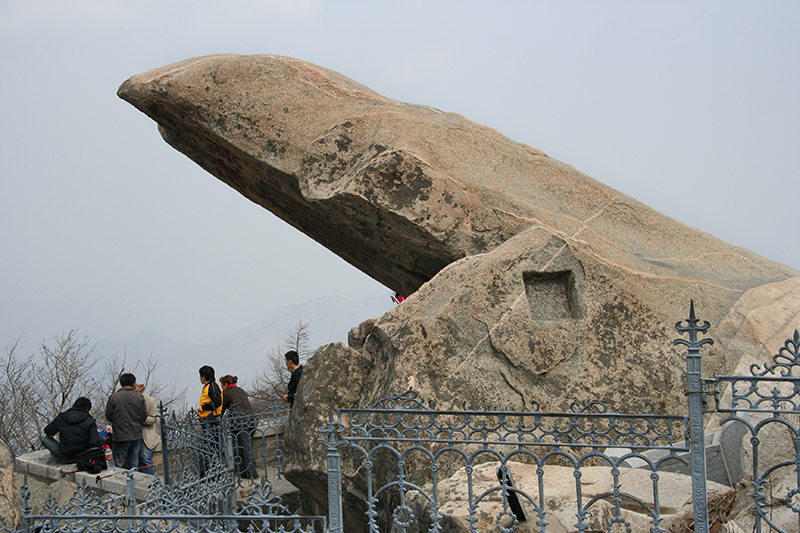 We spent some time strolling around the summit plateau, visiting the odd shaped sunrise rock and Confucius Temple and taking the mandatory tourist photographs. I would like to tell you how stunning the views were but I cannot. Despite it being a sunny Spring day, the visibility was about 5km at most with the distant mountains and the town disappearing in the smog. But it was, nonetheless, wonderful to stand on top of a mountain and an especially sacred one at that. Tai Shan may be a mountain of myth but, today at least, it was a mountain of mist. Thanks to the efforts of Pan Gu, we have been able to climb to heaven in the footsteps of Emperors and philosophers. Have we reached Heaven? Of course, who can doubt it. Have we become immortal, celestial beings? Only the children can answer that. Can we protect the world from disaster? What can go wrong?
We spent some time strolling around the summit plateau, visiting the odd shaped sunrise rock and Confucius Temple and taking the mandatory tourist photographs. I would like to tell you how stunning the views were but I cannot. Despite it being a sunny Spring day, the visibility was about 5km at most with the distant mountains and the town disappearing in the smog. But it was, nonetheless, wonderful to stand on top of a mountain and an especially sacred one at that. Tai Shan may be a mountain of myth but, today at least, it was a mountain of mist. Thanks to the efforts of Pan Gu, we have been able to climb to heaven in the footsteps of Emperors and philosophers. Have we reached Heaven? Of course, who can doubt it. Have we become immortal, celestial beings? Only the children can answer that. Can we protect the world from disaster? What can go wrong?

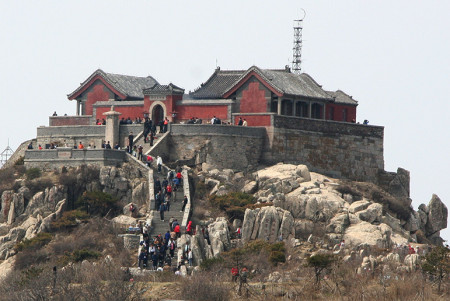
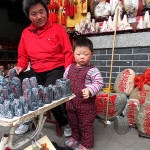
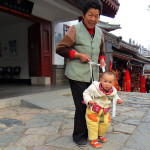
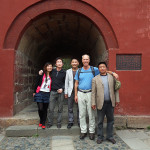
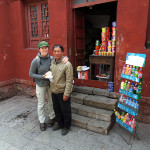
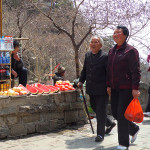
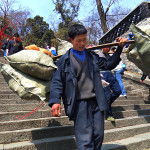
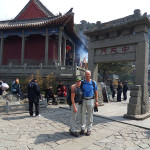
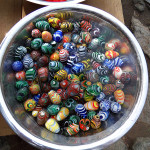
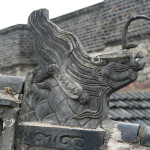
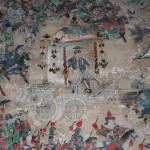
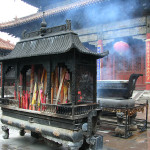
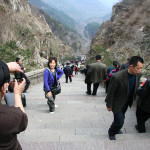
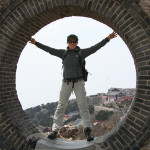

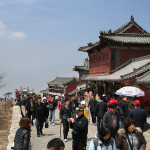
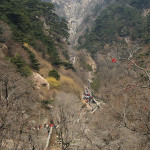
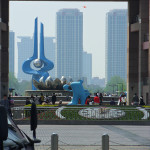
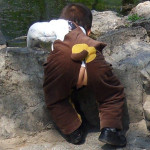

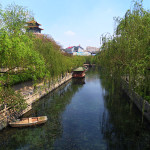
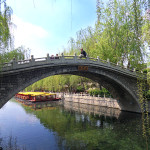
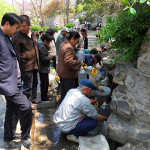
No comments yet.